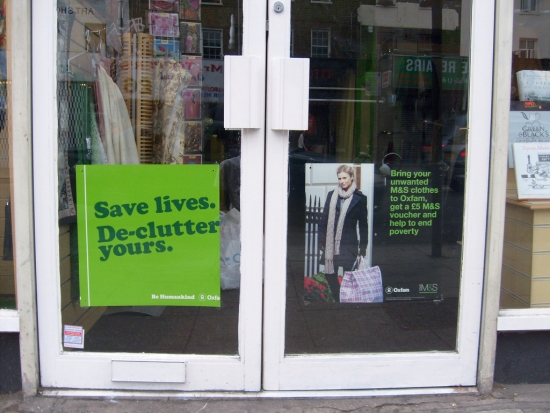As you walk down your local high street, you may have noticed the odd charity shop along the way. But have you noticed that more and more are appearing at a startling rate?

According to a report by the Local Data Company (LDC), there are around 10,000 charity shops on Britain’s high streets. This has increased by a whopping 30 per cent in the last five years. But with people hanging onto their belongings rather than spending on new clothes, is there really a need for so many charity shops?
Well it seems they will continue to open, whether we need them or not. Charity shops pay a considerable reduction in business rates, compared to non-charity retailers. This will surely give them an advantage over many retail businesses who will struggle to afford to buy or rent a commercial property on the high street. But the Charity Retail Association believes they do not have an unfair advantage over other retailers.
Warren Alexander, chief executive, said: “Charity shops do not compete unfairly with commercial firms. All charity shops pay standard market rates for rents and utilities just like other commercial ventures.”
So which high streets have the most charity shops? According to the LDC, central London has the most with 83, Brighton has 43, Blackpool has 24, Worcester is closely behind with 21, followed by Leicester which as 20 charity shops. But which charity shops are we most likely to see? The British Heart Foundation (BHF) has the most shops, with 732 throughout the UK. Oxfam isn’t far behind with 700 shops, whilst Cancer Research UK and Barnardo’s have significantly less with 550 and 457 shops respectively.
But why shouldn’t charity shops have a presence on the high street, if they can afford to be there. After all, they form a significant part of their fundraising and raising awareness.
Speaking of the need of a high street presence, the director of trading at Cancer Research UK, Simon Ledsham, said: “The profits from our shops form a significant part of Cancer Research UK’s income, helping to fund groundbreaking work into the prevention, diagnosis and treatment of cancer.
“The shops are also a vital presence on the high street, helping us engage with communities and sharing information about our vision to bring forward the day when all cancers are cured.”
Previous Post
US Property Insurers see Income Rise